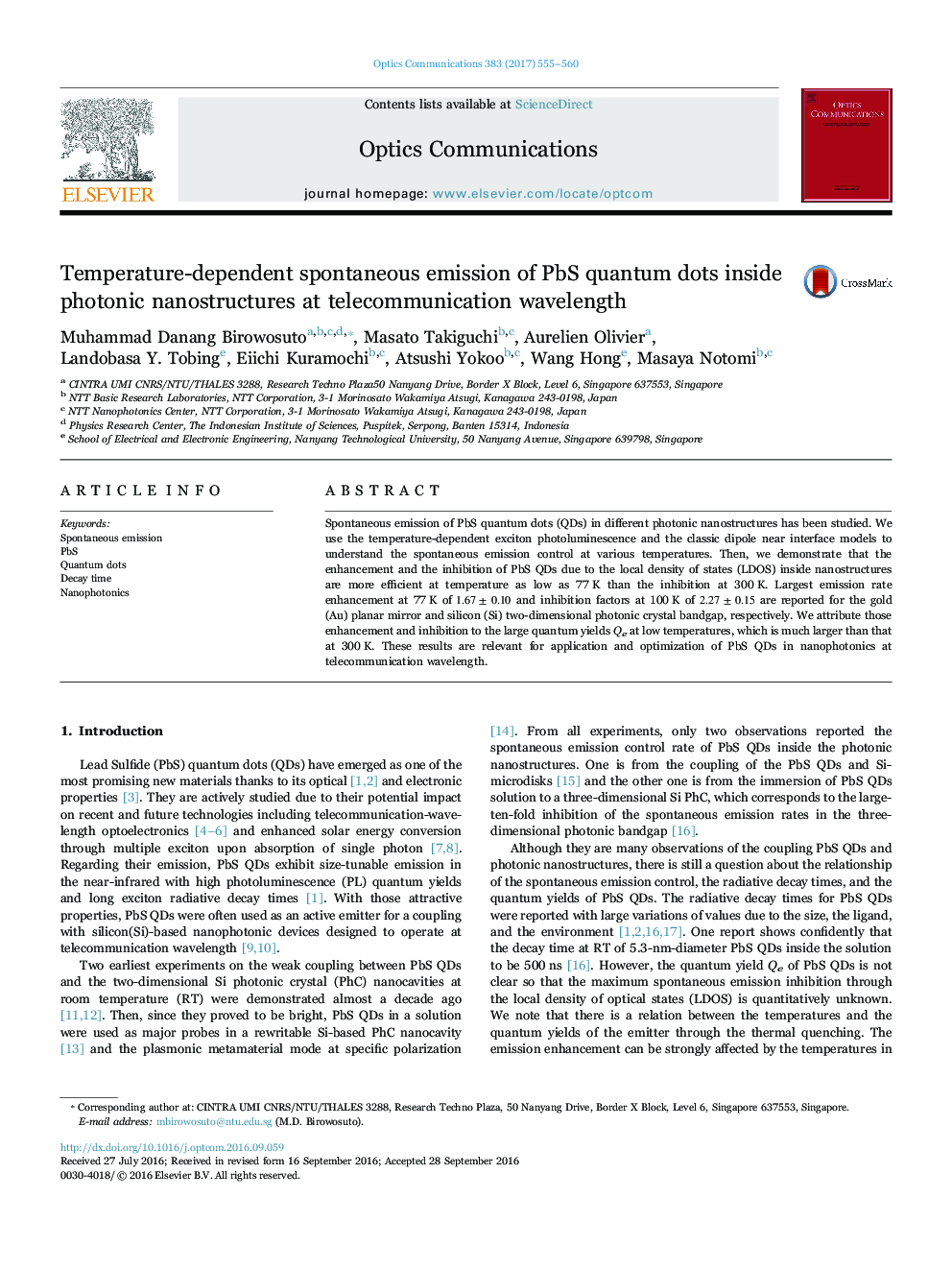| Article ID | Journal | Published Year | Pages | File Type |
|---|---|---|---|---|
| 7926978 | Optics Communications | 2017 | 6 Pages |
Abstract
Spontaneous emission of PbS quantum dots (QDs) in different photonic nanostructures has been studied. We use the temperature-dependent exciton photoluminescence and the classic dipole near interface models to understand the spontaneous emission control at various temperatures. Then, we demonstrate that the enhancement and the inhibition of PbS QDs due to the local density of states (LDOS) inside nanostructures are more efficient at temperature as low as 77 K than the inhibition at 300 K. Largest emission rate enhancement at 77 K of 1.67±0.10 and inhibition factors at 100 K of 2.27±0.15 are reported for the gold (Au) planar mirror and silicon (Si) two-dimensional photonic crystal bandgap, respectively. We attribute those enhancement and inhibition to the large quantum yields Qe at low temperatures, which is much larger than that at 300 K. These results are relevant for application and optimization of PbS QDs in nanophotonics at telecommunication wavelength.
Related Topics
Physical Sciences and Engineering
Materials Science
Electronic, Optical and Magnetic Materials
Authors
Muhammad Danang Birowosuto, Masato Takiguchi, Aurelien Olivier, Landobasa Y. Tobing, Eiichi Kuramochi, Atsushi Yokoo, Wang Hong, Masaya Notomi,
